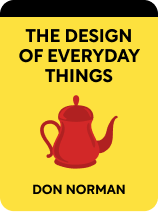

This article is an excerpt from the Shortform book guide to "The Design of Everyday Things" by Don Norman. Shortform has the world's best summaries and analyses of books you should be reading.
Like this article? Sign up for a free trial here .
What is “head knowledge” and how is it different from “knowledge of the world?” How do these two types of knowledge relate to design?
Head knowledge refers to any information stored in your mind. This can range from phone numbers you’ve memorized to knowing how to complete a task, like sewing on a button.
Keep reading to find out about head knowledge and how different types of knowledge affect how we process information.
“Head Knowledge” vs. “Knowledge in the World”
Norman refers to any information stored solely in memory as “knowledge in the head” or “head knowledge” This applies to things like passwords on your computer (unless you’ve written them down) as well as knowing how to use a computer in the first place. Head knowledge can be either declarative or procedural.
- Declarative knowledge is knowledge of something (like knowing your address or the fact that red traffic lights mean stop). Anything that can be written as a fact is declarative knowledge, regardless of whether it’s true. You may know for a fact that Thomas Edison invented the lightbulb, and that knowledge might impact how you think about the technology of lightbulbs in general—the fact that Edison did not actually invent the lightbulb is not important in your interaction with that technology. This is one type of knowledge in the head.
- Procedural knowledge is “knowledge how.” This applies to things we do without being able to precisely explain how we do them. Procedural knowledge is built up with repeated practice and can’t be easily taught to someone else. A master musician can describe the notes she plays and the time signature, but she probably can’t articulate the flow of her movements as she actually plays. Even describing the mechanics of playing an instrument (“I put the first finger of my left hand here, and strum this string with my right hand”) is not the same as truly knowing how to do it—if it were, all it would take to master any skill would be to read about it.
“Knowledge in the world” is anything we know without having to store it in memory. People learning to use a keyboard can look at the letters—they don’t need to memorize the location of every key in advance. Students take notes in lectures instead of attempting to memorize every word they hear. Even something as simple as putting your wallet under your keys so you don’t forget to bring it when you leave the house counts as knowledge in the world since it takes the burden off your memory. The design principles in Chapters 1 and 2 are examples of knowledge in the world. Signifiers, perceived affordances, and feedback all give us clues on how to use something, eliminating the need to memorize it.
The Limits of Head Knowledge
Human memory is an incredible tool that stores massive amounts of information from every part of our lives. But that same power imposes certain limitations. To free up space to remember the things that are most important for our survival, our brains naturally offload any information that is readily available in the environment.
The advent of cell phones is a great example of this. Before cell phones, it was common to have the phone numbers of your closest contacts memorized, making them easy to dial on any available phone. Now, our devices store this information for us. We’ve moved that knowledge into the world, and in response, most of us have completely forgotten many of the numbers we once had memorized.
Furthermore, head knowledge is typically imprecise. We don’t need an exact understanding of every detail of an object or situation when a rough working model will do. To safely cross the street, you don’t need to be able to identify the make and model of every nearby car—you only need to be able to tell whether or not it’s moving, and at what speed. In other words, the knowledge we keep in our heads is the bare minimum that we need to function in any given environment.

———End of Preview———
Like what you just read? Read the rest of the world's best book summary and analysis of Don Norman's "The Design of Everyday Things" at Shortform .
Here's what you'll find in our full The Design of Everyday Things summary :
- How psychology plays a part in the design of objects you encounter daily
- Why pushing a door that was meant to be pulled isn't your fault
- How bad design leads to more human errors






